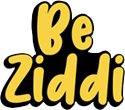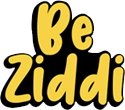As technology transforms our world, education must do more than keep up—it must foster real connection. Traditional classrooms are being replaced by dynamic, community-based learning, where people advance together. Community learning is now showing that engaged, connected groups achieve deeper understanding and real-world impact.
Community learning isn’t new, but its modern form has been supercharged by digital platforms and global connectivity. Through online groups, mentorship networks, or collaborative courses, it proves learning is more powerful when social.
The power of community learning lies in its ability to turn knowledge into connection. Unlike traditional education, it empowers people to learn more deeply through social collaboration, shaping the next generation of thinkers, creators, and entrepreneurs.
1. The Shift from Isolation to Collaboration
For decades, education has been seen as an individual pursuit: students sitting in rows, taking notes, and competing for grades. But this model often ignores a key truth: humans are social learners.
We learn best when we interact, exchange ideas, and build on each other’s experiences. Community learning replaces isolation with collaboration, letting people work toward shared goals and benefit from each other’s strengths.
In these environments, students learn not just from instructors but also from peers with unique perspectives. This shared ecosystem encourages deeper understanding and critical thinking, the kind of learning that lasts beyond exams and grades.
In the digital age, platforms like -are redefining this idea. They offer interactive communities where learners engage directly with mentors and fellow students. Instead of passive video lessons, members discuss, test, and apply concepts together, a true form of learning by doing.
2. Why Connection Enhances Understanding
A major benefit of community learning is its ability to create strong connections that deepen understanding and retention.
When people share what they know, they reinforce their own understanding. Teaching others, even informally, forces you to clarify your thoughts, identify gaps, and organize ideas. This process transforms information into wisdom.
Collaboration also sparks creativity. When people from diverse backgrounds discuss a topic, they challenge assumptions and inspire new ideas. For example, a designer may help a marketer think visually, while a writer may help an entrepreneur communicate better.
These cross-disciplinary exchanges mirror how the real world works: diverse teams solving real problems together. That’s why learning within a community feels more practical, relevant, and ultimately more effective.
3. The Motivation Factor: Learning Together Keeps You Going
Motivation is one of the hardest parts of self-directed learning. Many people start online courses with enthusiasm but drop out halfway because of a lack of accountability.
Community learning solves this with built-in support. When you study with others who share your goals, you feel more motivated. Progress becomes social as you celebrate milestones and push each other through challenges.
In platforms like The Real World, this dynamic is at the heart of the learning experience. Members interact daily with like-minded individuals pursuing the same goals — whether it’s mastering digital marketing, launching an online business, or building financial freedom. This sense of belonging keeps motivation high and dropout rates low.
Humans are wired for social connection. We are more likely to persist when others are cheering us on or walking the same path. That is why a community-based approach often leads to better long-term outcomes than solitary learning.
4. Real-World Application Beats Theoretical Knowledge
In traditional education, students often focus on memorization, learning facts for exams without understanding how to use them. Community learning flips this script.
In community-driven environments, knowledge is applied immediately. Learners collaborate on projects, share feedback, and discuss real-world applications, making learning more relevant and engaging.
For instance, instead of just reading about entrepreneurship, members of The Real World actually build and test online businesses with mentorship and peer feedback. By turning theory into practice, they develop real skills that lead to measurable outcomes.
This hands-on approach is why community learning produces confident, capable learners who adapt to changing industries.
5. The Emotional Power of Belonging
Learning is not just intellectual; it is emotional. When people feel isolated, they lose focus and confidence. Community learning offers something traditional classrooms often miss: a sense of belonging.
Belonging builds trust, and trust fosters growth. When you are surrounded by supportive peers, you are more willing to ask questions, make mistakes, and take creative risks. These are the moments when real learning happens.
In The Real World, members often describe the community as a brotherhood or network of builders. They connect not just for education but for encouragement, friendship, and shared purpose. This emotional connection turns learning from a task into a lifestyle built on collaboration and mutual respect.
6. Diversity Makes Learning Stronger
Another benefit of community learning is its diversity, bringing together people from varied backgrounds for richer learning.
Traditional education often groups people by age, grade, or major, limiting exposure to different viewpoints. Community learning breaks those boundaries. People from different backgrounds come together to learn the same skill, creating a melting pot of perspectives and expanding horizons. Learners begin to understand not just the subject, but the world. They see how ideas apply across cultures and industries.
On a global platform like The Real World, where thousands of students from different backgrounds collaborate daily, diversity becomes an engine for innovation. It teaches cultural intelligence, a skill as valuable as any technical one in the modern workplace.
7. Feedback and Growth: The Cycle of Improvement
In traditional classrooms, feedback often comes only from teachers and sometimes too late to be useful. In a community learning model, feedback is constant and multidirectional.
Students learn from peers, mentors, and even newcomers. Constructive criticism and shared insights create a feedback loop that accelerates improvement. This immediate interaction helps learners quickly identify strengths and weaknesses, allowing faster progress.
Platforms like The Real World use this system effectively — combining expert guidance with peer evaluation. Members can share their work, receive suggestions, and instantly apply them. This cycle of improvement is what turns beginners into professionals.
8. Building Confidence Through Contribution
Perhaps the most underrated aspect of community learning is how it builds confidence.
In isolated learning, it is easy to doubt yourself. You wonder if you are good enough or if you are learning correctly. In a community, every contribution, whether a question, idea, or solution, adds value. Over time, these contributions boost confidence and create a sense of mastery.
The Real World encourages active participation. Students who help others rise quickly through experience and recognition. As they teach and contribute, they not only reinforce their knowledge but also build leadership and communication skills.
Confidence gained through contributing to a community is a powerful benefit—helping learning, entrepreneurship, and personal growth.
9. Technology as the Great Connector
Technology is a key benefit of modern community learning, enabling global reach and instant, interactive connection.
Technology removes barriers of geography, cost, and access — making education truly democratic. A student in Bangladesh can learn digital marketing alongside a mentor in the UK or an entrepreneur in Canada.
The Real World has mastered this global connectivity by creating structured digital “campuses” that operate like modern universities — but faster, more practical, and more inclusive. Technology makes it possible to combine the best of both worlds: the intimacy of small communities and the reach of global education.
10. The Future: Community Is the New Classroom
As the world moves further into digitalization, the way we learn must evolve too. The future of education lies not in isolated study but in shared growth.
Community learning empowers individuals to keep up with rapid technological changes, adapt to new markets, and continuously reskill. It turns learning into a lifelong process supported by people who share your vision.
Platforms like The Real World exemplify this new model — where education isn’t just about consuming information, but about collaborating, applying, and growing together. They transform learners into active participants in the digital economy, not just observers.
Conclusion: Knowledge Grows When Shared
What makes community learning truly powerful is its ability to transform knowledge into connection, and connection into meaningful progress. This is the heart of education’s evolution in the digital age.
When people come together to learn, they don’t just absorb facts; they build relationships, confidence, and real-world experience. They turn learning from a lonely pursuit into a shared mission.
Ultimately, education’s value is amplified by those you learn with. Shared learning creates deeper relationships, stronger confidence, and real-world growth. In a world often marked by isolation, community learning is proof that connection is the driving force behind genuine progress.







